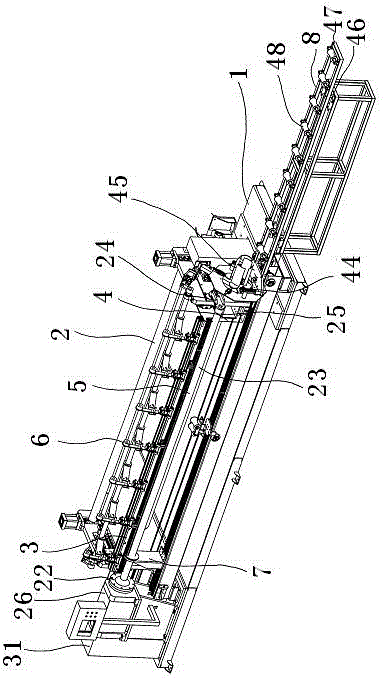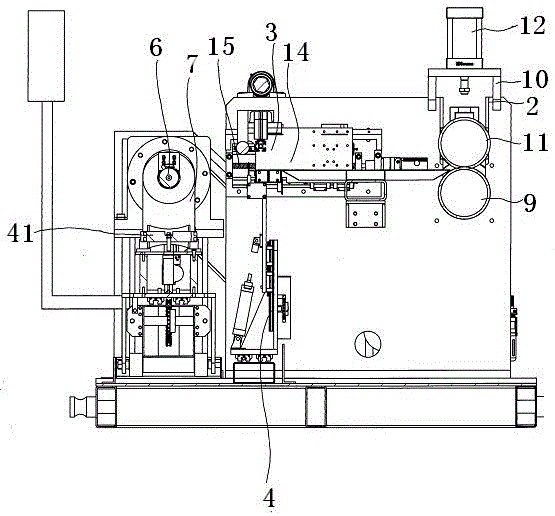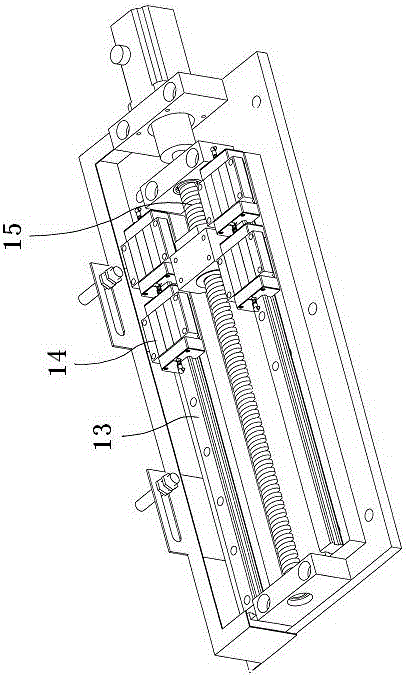Plate winding machine and method for winding plate through plate winding machine
A winder and sheet technology, which is applied to the parts of bundling machinery, winding strips, and thin material processing, etc., can solve the problems of uneven side edges of sheet rolls, increased sheet tension, and uneven sheet tension.
- Summary
- Abstract
- Description
- Claims
- Application Information
AI Technical Summary
Problems solved by technology
Method used
Image
Examples
Embodiment Construction
[0050] The structure and operating principle of the plate winder of the present invention will be further described in detail below in conjunction with the accompanying drawings.
[0051] like figure 1 and figure 2 As shown, it is a schematic structural view of the plate winder of the present invention. The plate winder of the present invention includes a frame body 1, a traction mechanism 2, a feeding mechanism 3, a cutting mechanism 4, a winding mechanism 5, a packing mechanism 6, a pushing mechanism 7 and Packaging weighing mechanism 8, feeding mechanism 3 is arranged behind traction mechanism 2, cutting mechanism 4 is located at the rear end of feeding mechanism 3, winding mechanism 5 is located at the rear end of cutting mechanism 4, packaging mechanism 6 is located at the upper end of winding mechanism 5, and packaging weighing mechanism 8 Located on one side of the winding mechanism 5. The traction mechanism comprises a lower traction shaft 9 fixed with the frame bod...
PUM
 Login to View More
Login to View More Abstract
Description
Claims
Application Information
 Login to View More
Login to View More - R&D
- Intellectual Property
- Life Sciences
- Materials
- Tech Scout
- Unparalleled Data Quality
- Higher Quality Content
- 60% Fewer Hallucinations
Browse by: Latest US Patents, China's latest patents, Technical Efficacy Thesaurus, Application Domain, Technology Topic, Popular Technical Reports.
© 2025 PatSnap. All rights reserved.Legal|Privacy policy|Modern Slavery Act Transparency Statement|Sitemap|About US| Contact US: help@patsnap.com



